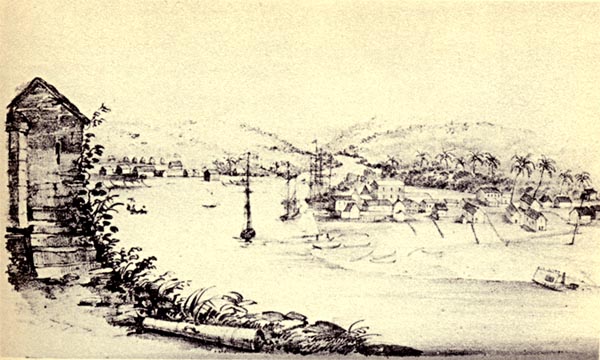| Obverse Design | The legend "COLON" curves along the top. The legend "Y CHAGRE" curves along the bottom. Across the middle is the legend "A. GROSSO". All these legends use incuse lettering. The token has a smooth edge without a rim. | ||||
| Reverse Design | The reverse side of this token is blank. It has a smooth edge without a rim. | ||||
| Metal | White metal, perhaps silver. | Size and Shape | Round, 20 mm in diameter. | ||
| Dates Issued | Probably sometime between 1851 and 1853. | ||||
| Issurer | A. Grosso. | ||||
| Mintage | Unknown. | ||||
| Rarity | Very Rare. | Manufacturer | Unknown. | Other Catalog Numbers | Asociación Numismático's F-8, Henkle's Colon #3, Henao's COM 018-1, Plumer page #1, Rulau's Col 39. |
| Varieties | None known. | ||||
| Function | Merchant token. | ||||
| Population Count |
Three specimens are known to me in collector hands. Recent sales are as follows:
Jerald Peterson, who made the metal detector find of the specimen shown above, reported finding about three of these tokens over time. |
||||
| Notes | Chagre was a fishing village at the mouth of the Chagre (present day Chagres) River. It experienced a brief boom from about 1850 to 1852 when it functioned as the Atlantic terminus of the trans-Istmus route during the California gold rush. The boom ended when the Panama Railroad was long enough to be useful, and the railroad town of Colon (founded in 1850) became the new Atlantic terminus. This token appears to have been issued during the transition period when both towns were important enough to be mentioned on the token. The example above was a metal detector find at the mouth of the Chagres River, and was found near United States half-dimes from the 1840's. | ||||
| Notas Históricas |
Chagre era una aldea de pescadores en el estuario del río del mismo nombre (más tarde Chagres), que experimentó una breve prosperidad a partir de 1850, cuando servía como puerto de entrada en el Atlántico para los inmigrantes que atravesaban el istmo, rumbo a California durante la fiebre del oro. Esta fugaz notoriedad duró solo un par de años, hasta que fue desbancada por la recién fundada Colón (Aspinwall), de donde partía el Ferrocarril de Panamá, que para entonces ya tenia longitud considerable. El ejemplar ilustrado se halló con un detector de matales en la desembocadura del Chagres, junto con monedas norteamericanas de la década de 1840. |
||||
